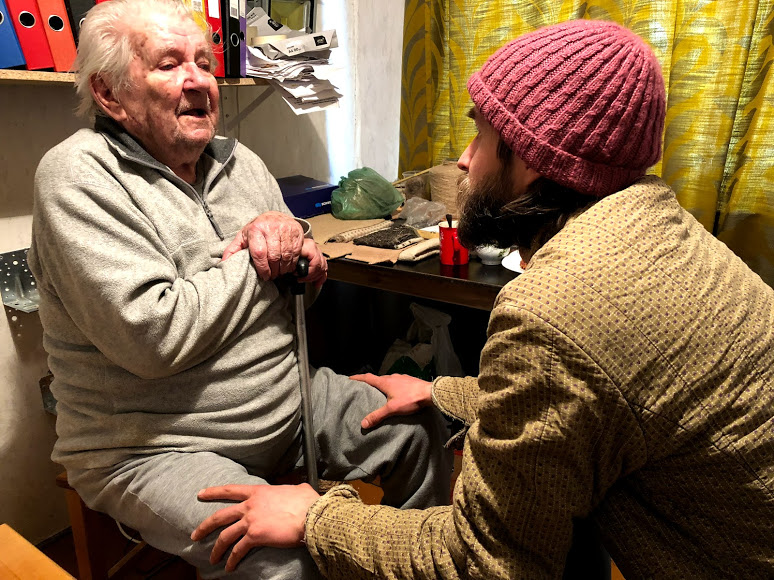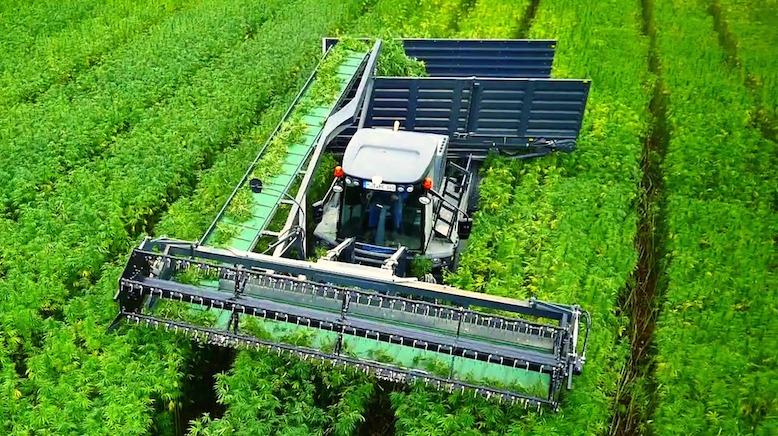With all the big hemp money chasing CBD, its no wonder that Isolate Extraction Systems is flourishing. Well-positioned in the expanding hemp value chain, IES, Louisville, Colorado, USA has predicated a big part of its future on growing demand for cannabidiol. The company already has more than 100 extraction installations in 45 U.S. states that turn out compounds from hemp and other raw material via its CO2-based extraction technology, CEO Kelly Knutson said.
IES is currently in the process of designing and building a new CO2 machine that is not only faster and more efficient than ethanol, butane, or steam, but which can also automatically separate terpenes, oils and waxes mid-process, a major advancement.
The investment represented in this highly sophisticated technology is considerable. Extraction systems can range in price from several hundred thousand Euros for a baby one, to millions for large industrial operations. Aside from IES’s home market in the U.S., Knutson sees demand developing from Australia to Europe, in Canada, and Central & South America. And while the extraction technology sub-sector may be a particularly sweet spot in the CBD value chain, big money is chasing the business at every link. All of that is good to hear.
In the fields and workshops
But machines to harvest the full promise of hemp also are needed closer to the earth, where most of the current investments are in blood, sweat and tears over some dream machine. In pockets around the world, independent entrepreneurs – engineers and other problem solvers – are developing small-scale, specialized hemp machines, usually providing the needed cash too.

German engineer Heinrich Wieker has been in hemp fields and in the workshop for three years developing a mobile harvester and electrically driven hemp bud stripper that can work in the field or in a barn or small factory. It travels on a trailer behind any small truck or jeep.
While “hand-harvested” may sound like a good marketing slogan, taking swarms of people into the field to collect a crop is less and less economically feasible as supplies of hemp raw material expand. The harvester being developed by Wieker’s firm, Henry’s Harvester, Burgdorf, Germany, is designed to deliver fluffy whole flower tops sorted from the plant’s stems. Traveling through a system of chains and rollers, stems are collected on one side of the machine while flowers are gathered on the other.
Out-of-pocket financing
Wieker invested personal money and signed on to bank loans to finance his harvester, all the time working a day job. His goal is to give small farmers an efficiency boost while allowing them to expand their fields, facilitating high-quality bud production while cutting labor costs.

In tiny Dzukste, Latvia, metal worker Kristaps Eglitis is working with Voldemars Cirulis on another little dream machine, a decorticator project started by the 95-year-old Cirulis while living in Australia in the early 2000s. For the small but growing number of hempcrete building enthusiasts around the world – that includes Eglitis – it’s the kind of machine that could finally be arriving at its place in hemp time.
The value of small-scale machines
These small machines fit into the current hemp landscape in two important ways. First, they have the potential to help spark a revival of the small farming enterprise. Community Supported Agriculture (CSA) initiatives – in which producers and consumers share the risks of growing food while keeping supply and demand in balance locally – have functioned in Europe for several years.
Advocates see hemp as a perfect fit into this strategy which aims to keep the supply chain close to the food source. Hemp, these visionaries say, offers not just food for the community but the potential for clothing, health aids, efficient homes and even fuel. It’s a vision that puts hemp at the center of agrarian renewal, and a more sustainable way of life.
Small and medium-sized machines, mobile machines – affordable machines – also are necessary in the interim before more industrial-scale farms come on line in the giant agriculture nations such as Canada, the United States, China, India, and Australia. As the industry grows slowly but steadily, hemp fields continue to be generally small, particularly, and unfortunately, in the U.S. where federal and state governments dictate limitations on the crop’s cultivation.
Big farm machines also rolling
At the other end of the farming spectrum, European hemp veteran Rafael Dulon, HANF FARM, GmbH, Berlin, continues to innovate on his Multi-Combine HC 3400 platform – a wildly flexible industrial-scale hemp harvester that’s been working fields across Europe for the past three years. The system allows for the lopping off of the crop several times during the yearly vegetation, and can harvest short and long varieties of hemp as it chews through the field at 10-12 kilometers per hour, collecting and then sorting the stems, seeds and flowers.
“Of course, financially, it’s a long term investment,” Dulon said of the MC HC 3400. “But continuing to perfect the harvester is a labor of love. It’s our expression of confidence in the industry,” said Dulon, a 20-year veteran in European hemp circles, a farmer and producer of hemp foods as well as flower and leaf material for extraction.
Despite the relatively restricted situation in the USA, Power Zone, a Colorado developer, also is offering a big-scale harvester and processing ensemble – one that can be used with existing farm machinery, a key selling point for farmers looking to maximize their return on investment. The platform – again, self-financed – which is designed for optimal flower yield for CBD oil and to collect hemp straw, can crawl through the field at a rate of 12 acres per hour, and features cut options ranging between six inches and 15 feet off the ground. Power Zone’s Fiber Track decortication equipment can process up to 10 tons of hemp straw per hour, turning it into hurd for building materials.
Thank the tinkerers
Like everything else in the hemp industry these days, technological advancement cries out for investment. It’s good to hear the roar of the CBD sector. It’s an attractive portal to hemp for the early, high-stakes investors needed to keep things moving. Meanwhile, back down the value chain, we should thank the tinkerers, engineers and other dreamers who, with their own time and money are contributing to the industry at the grass roots level while they chase the perfect hemp machine. They send an important signal: If we’re to harvest hemp for all it offers, greater investment in technology and machines is needed up and down the value chain.

